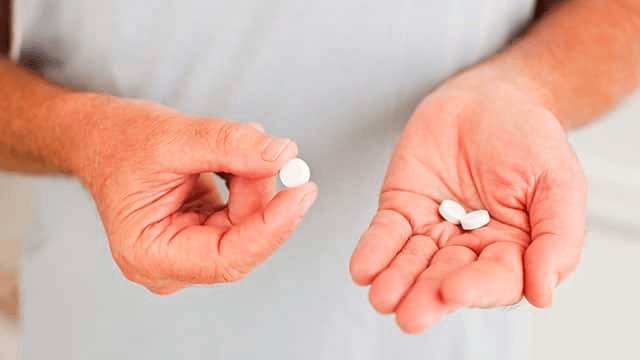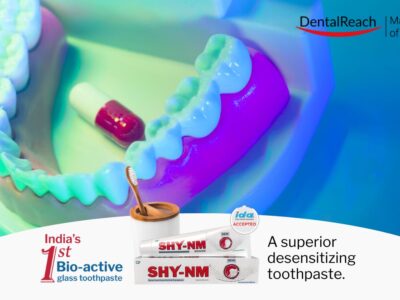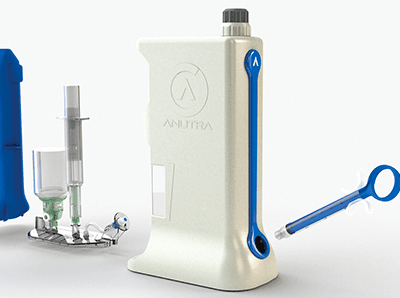(This article is part 1 of the 2-part series on postoperative pain relief in dentistry)
Abstract
Pain is one of the main problems in the early postoperative period at the completion of the surgical intervention, after the effect of local anesthetics wears off. For its treatment in modern outpatient practice, non-narcotic analgesics are used, which, in addition to the analgesic effect, have antipyretic, anti-inflammatory and desensitizing properties. This part describes them in detail – their names, types, mechanisms, pharmacokinetics, pharmacodynamics and side effects.

The best analgesic in dentistry
Analgesic ("pain reliever") is a medicinal substance of natural, semi-synthetic or synthetic origin, intended to relieve pain – analgesia .
Non-steroidal anti-inflammatory drugs (NSAIDs, also called non-narcotic analgesics) is a group of drugs that have analgesic, antipyretic, desensitizing and anti-inflammatory effects, and reduces pain, fever and inflammation.
The use of the term "nonsteroidal anti-inflammatory" in the name emphasizes their difference from glucocorticoids, which have not only an anti-inflammatory effect, but also other, sometimes undesirable, properties of steroids.
The term “non-narcotic analgesics” is appropriate because these drugs reduce the perception of pain without a noticeable disruption of other functions of the central nervous system and are devoid (unlike narcotic analgesics) of a psychotropic effect (and hence the patient becomes addicted to them), a depressing effect on nerve centers, which allows them to be used more widely, for a long time, as well as in outpatient practice.
NSAIDs are characterized by:
- a non-specific anti-inflammatory action, that is, an inhibitory effect on any inflammatory process, regardless of its etiological and pathological features
- relatively good tolerance associated with their rapid elimination from the body
- in therapeutic doses – an inhibitory effect on platelet aggregation and the interaction of immunocompetent cells
- binding to plasma albumins with competition between different drugs for binding sites.
Mechanism of Action
In non-narcotic analgesics, a certain role is played by their effect on the thalamic centers, which leads to inhibition of the conduction of pain impulses in the cerebral cortex. By the nature of the central action, these analgesics differ from narcotic ones in that they do not affect the ability of the central nervous system in summation of subcortical impulses.
Non-narcotic vs narcotic drugs
Non-narcotic analgesics in their pharmacological properties differ significantly from analgesics of the narcotic morphine group. These drugs are significantly inferior to narcotic painkillers in terms of the strength of the analgesic effect. Non-narcotic analgesics
- do not depress breathing
- do not cause euphoria
- do not cause drug dependence
- do not have a hypnotic effect
- do not affect the cough center
In this group of drugs, anti-inflammatory and antipyretic effects are clearly manifested, which narcotic analgesics do not have. The advantage of these drugs is the absence of a narcotic effect, which gave reason to widely use them in outpatient practice.
Classification & Types
Non-narcotic analgesics are classified according to their chemical structure:
1. Salicylic acid derivatives: Representatives of this group are characterized by low toxicity. LD50 (semi-lethal dose – the average dose of a substance that causes the death of half the members of the test group) of acetylsalicylic acid is 120 g. They have a prolonged anti-inflammatory and analgesic effect. However, they have a noticeable irritant effect (risk of ulceration and bleeding). Preparations of this group are contraindicated in children under 12 years of age.
Examples –
- acetylsalicylic acid (aspirin)
- lysine acetylsalicylate (acelysin)
- sodium salicylate
- methyl salicylate
- salicylamide
- viox (difiunisal – a derivative of salicylic acid)
2. Pyrazolone derivatives:
The drugs have a small breadth of therapeutic action, they inhibit hematopoiesis, therefore they are not prescribed for a long time.
Examples –
- amidopyrine (aminophenazone)
- metamizole sodium (analgin)
- phenylbutazone (butadione)
- phenazone (antipyrine)
Analgin, due to its good water solubility, is used intramuscularly, subcutaneously and intravenously for emergency pain relief and the treatment of hyperthermia. Amidopyrine increases convulsive readiness in young children and reduces diuresis.
3. Para-aminophenol derivatives:
Representatives of this group lack anti-inflammatory activity, antiplatelet and antirheumatic effects. Practically do not cause ulceration, do not inhibit kidney function, do not increase convulsive activity of the brain.
Examples –
- phenacetin
- paracetamol
Paracetamol is the drug of choice in the treatment of hyperthermia, especially in children. Phenacetin with prolonged use causes nephritis.
4. Derivatives of organic acids:
- Phenylacetic – sodium diclofenac (ortofen, voltaren).
This drug rarely causes ulceration and is mainly used as an anti-inflammatory and antirheumatic agent. - Phenylpropionic – ibuprofen, naproxen, ketoprofen, pirprofen, thiaprofenic acid (thiaprofen).
Ibuprofen is similar to diclofenac; naproxen and pyroprofen give a greater anti-inflammatory effect; thiaprofen shows greater selectivity in suppressing the synthesis of PG F2-alpha (less often it has side effect on the bronchi, gastrointestinal tract and uterus). - Indolacetic – metindol (indomethacin), sulindac, selective COX-2 inhibitor – stodolac.
Indomethacin is the standard in terms of anti-inflammatory activity (maximum), but interferes with the metabolism of brain mediators (reduces GABA levels) and provokes insomnia, agitation, hypertension, convulsions, exacerbation of psychosis. Sulindac turns into indomethacin in the patient's body, has a longer and slower action. - Anthranilic (fenamic): mefenamic acid, flufenamic acid.
Mefenamic acid is used primarily as an analgesic and antipyretic; niflumic acid in its properties is close to mefenamic acid; flufenamic is used as an anti-inflammatory agent (weak analgesic). - Pyrrolizinecarboxylic – ketorolac. It has a pronounced analgesic effect.
5. Oxicams:
The preparations differ in the duration (12-24 hours) of action and the ability to penetrate well into inflamed tissues.
Examples –
- piroxicam
- tenoxicam
- loroxicam (xefocam)
- selective COX-2 inhibitor meloxicam
6. Non-acid derivatives
- Alkanones: selective COX-2 inhibitors – nabumetone.
- Sulfonamide derivatives: nimesulide (Nise), rofecoxib, highly active COX-2 inhibitors – celecoxib (Celebrex)
For Pharma Enthusiasts – All About NSAIDs.
Administration : Most NSAIDs are taken orally.Water-soluble forms of some drugs (sodium salicylate, diclofenac, metamizole, acetylsalicylic acid) can be administered intravenously or intramuscularly.
Bioavailability: Bioavailability (the amount of a drug substance reaching the site of its action in the human body – the ability of the drug to be absorbed) of NSAIDs is 70-100%. Since NSAIDs are weak organic acids, their absorption improves in an acidic environment. A shift in the pH of gastric contents to the alkaline side significantly reduces the rate of absorption. The maximum concentration of most NSAIDs in the blood is reached after 1-2 hours. Food slows down absorption.
Binding: NSAIDs almost completely (90-99%) bind to plasma proteins and displace other drugs from this complex. Derivatives of salicylic acid form functionally active complexes with blood serum albumins. They dissolve well in lipids, poorly in water, and are well absorbed from the GI tract in the form of undissociated molecules by passive diffusion. Due to the high lipid solubility of NSAIDs, they penetrate well into tissues, especially into the synovial fluid and the inflammatory focus. The concentration of the drug in the synovial fluid lasts longer than in the blood.
Elimination :NSAIDs are biotransformed in the liver to inactive (rarely to active) metabolites, excreted mainly by the kidneys in the form of metabolites by active tubular secretion. Excretion of the drug in the urine unchanged is negligible. The excretion of NSAIDs increases with an increase in urine pH. Some drugs (indomethacin, sulindac, piroxicam) are partially excreted in the bile and participate in the enterohepatic circulation. NSAIDs penetrate the placenta well, poorly – into breast milk.
Duration of action: T 1/2 (half-life – the time during which the serum concentration of the drug in the body during the equilibrium stage is halved) for short-acting drugs is less than 6 hours, for long-acting drugs – more than 6 hours.
The main short-acting drugs include
- acetylsalicylic acid
- diclofenac
- ibuprofen
- indomethacin
- ketoprofen
- nimesulide
- flurbiprofen
- etodolac
The main long-acting drugs are
- aceclofenac
- diflunisal
- meloxicam
- nabumetone
- naproxen
- piroxicam
- celecoxib
Side effects
associated with the action of NSAIDs are most commonly due to suppression of prostaglandin synthesis.
- Gastrotoxicity – dyspeptic disorders, erosion and ulcers of the stomach and duodenum and subsequent complications in the form of bleeding and perforation. It is necessary to simultaneously prescribe drugs that protect the mucous membrane of the gastrointestinal tract. Misoprostol and proton pump blockers (omeprazole) have the best effect, high doses of H2-blockers (famotidine 40 mg 2 times a day) can be effective.
- Nephrotoxicity: by deterioration of renal blood flow with a possible deterioration in kidney function, impaired water-electrolyte and nitrogen metabolism, increased blood pressure; or by direct damaging effect on the kidney parenchyma by the type of interstitial nephritis (nephropathy).
- Hematotoxicity – a decrease in the number of erythrocytes and leukocytes in the blood up to aplastic anemia and agranulocytosis. The most pronounced in pyrazolone derivatives.
- Hepatotoxicity – an increase in the activity of liver enzymes in the blood, in rare cases with the development of clinical manifestations of hepatitis.
- Violation of blood coagulation – through inhibition of platelet aggregation and the formation of prothrombin in the liver. This can contribute to the development of bleeding, primarily from the gastrointestinal tract.
- Bronchospasm – more often in patients already suffering from broncho-obstructive syndrome.
- Allergic reactions – possible, as with the use of any other drugs, skin rash, Quincke's edema, anaphylactic shock, Lyell and Stevens-Johnson syndromes.
- Prolongation of pregnancy and delayed delivery.
Prescribing NSAIDs
Due to the high lipid solubility, NSAIDs penetrate well into tissues, especially into the inflammatory focus. It makes sense to use these features when prescribing non-narcotic analgesics in the postoperative period.
A number of official combined preparations are produced, which can enhance the analgesic effect of NSAIDs, increase their bioavailability and reduce the risk of adverse reactions.
More detailed information about this is given in Part 2 of this article series – how to prescribe which NSAID and when, along with their interactions with other systemic drugs.


















Comments